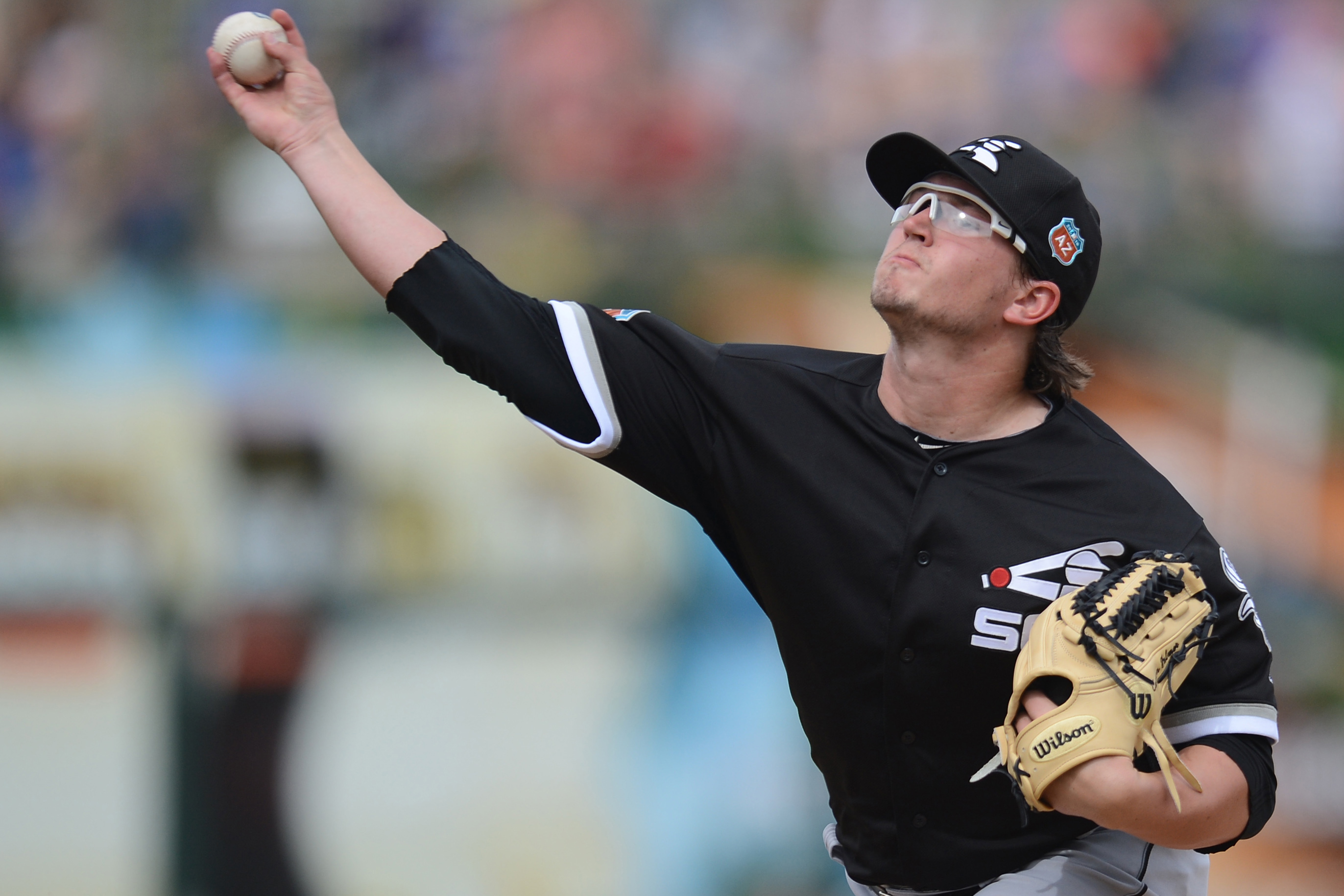The White Sox minor league system is pretty easy to figure out: At the top, you’ve got Tim Anderson and Carson Fulmer. Or Carson Fulmer and Tim Anderson, depending on how you want to rank them. Personally, I’d go 1. Anderson, and 2. Fulmer, but that comes with the caveat that White Sox hitting prospects have a tendency to wander into Springfield’s Mystery Spot never to be heard from again.
Either way, you’re not going to get much disagreement if you say that Anderson and Fulmer are the team’s top two prospects. They’re the two you see on all the “top prospects” lists that come out around this time of year (including BP’s Top 101), and they’re the guys with the best chance of becoming above-average regulars, or maybe even superstars if you’re really feeling bold.
After that? Well, things get a little murky. Maybe you like Spencer Adams or Micker Adolfo. Those guys are oozing with potential, but aren’t likely to see a major league roster until near the end of Trump’s first term in office. Hey, Adam Engel won the Arizona Fall League MVP! Trey Michalczewski has shown promise at third base, but might not be a third baseman, and I’m sure Jordan Guerrero being good one day is a safe bet because, if my math is correct, White Sox + Pitching Prospects = $$$$.
But regardless of which guys you like more than others, the two guys to be excited about are Fulmer and Anderson. They’re also the two guys to be excited about soon, as the countdown to their respective ascensions to the major league roster has begun.
When will those clocks hit zero, exactly?
In Fulmer, the White Sox have, in some aspects, a similar situation to what they had one year ago in Carlos Rodon. While Fulmer isn’t projected to be quite the can’t-miss prospect as Rodon, their trajectory from draft day to major league debut may end up mirroring each other. In fact, Don Cooper recently said Fulmer is further ahead than Rodon was at this point a year ago.
Seeing Fulmer in a White Sox uniform in 2016 seems more a matter of when than if. But the when is almost wholly dependent on the success or failure of the rest of the White Sox pitchers. A year ago, the White Sox entered the season with Chris Sale, Jeff Samardzija, Jose Quintana, and a hodgepodge of mediocrity in their rotation (Samardzija was terrible, too, but that wasn’t exactly known at the time. Now I’m depressed. Let’s move on). This year, put Rodon in Samardzija’s place and you’re looking at basically the same situation, with John Danks, Mat Latos, Erik Johnson (who was recently demoted) and maybe Jacob Turner trying and probably failing to fill out those last two spots as adequately as possible.
It was clear at this time last year that we’d see Rodon at some point. And while he initially started in the bullpen, Hector Noesi‘s general terribleness escalated his ascent. Likewise this year, injury or ineffectiveness either in the rotation or the bullpen will be what gives Fulmer his shot to debut. I would be shocked if it came later than June.
Scouts have been largely split on his upside, however. Despite what Cooper said about Fulmer being ahead of where Rodon was last year, as Ethan pointed out last week, the type of promise Rodon has shown this early in his career is quite rare, so while the comparisons are apt in some respect, it would be unwise to expect Fulmer to be Rodon. But regardless of if you think his future is in the bullpen or as a solid addition to the rotation, he’s likely to contribute to the White Sox major league roster fairly soon.
Anderson’s case is a little more complicated. White Sox hitting prospects have been almost entirely terrible for more than a decade now, so while his upside is tantalizing, the memories of Gordon Beckham Hype are far too recent to be anything but cautious with a talent this exciting.
Of course, the White Sox have complicated matters by failing to employ a shortstop that elicits a whole lot of confidence in success. Their dependence on either a 37-year-old former star who could be serviceable but could also be old and broken down, or a below-average hitter who projects better as a utility infielder, has led some to wonder if he could contribute to the team in 2016.
With the addition of Jimmy Rollins, it’s hard to imagine a scenario where Anderson would see time in the majors beyond a September call-up. Let’s not forget, he didn’t even start playing baseball until his junior year at East Central Community College, and even if he goes on a tear at the beginning of the minor-league season that would seem to force management’s hand, when you couple that with the fact that he has never seen a pitch at Triple-A, only has about a season’s worth of at-bats at Double-A, and the whole thing about the White Sox history of developing hitting prospects, and it’s hard to envision a reasonable scenario where he should see the field at the major league level in 2016.
The White Sox don’t have a ton of depth in their minor-league system. Beyond Fulmer and Anderson, there are several lottery tickets who could become serviceable major leaguers if things break right. But regardless of how much those two contribute in 2016, their development will play a big role in improving the roster, whether it be this year or beyond.
Top photo credit: Joe Camporeale-USA TODAY Sports
